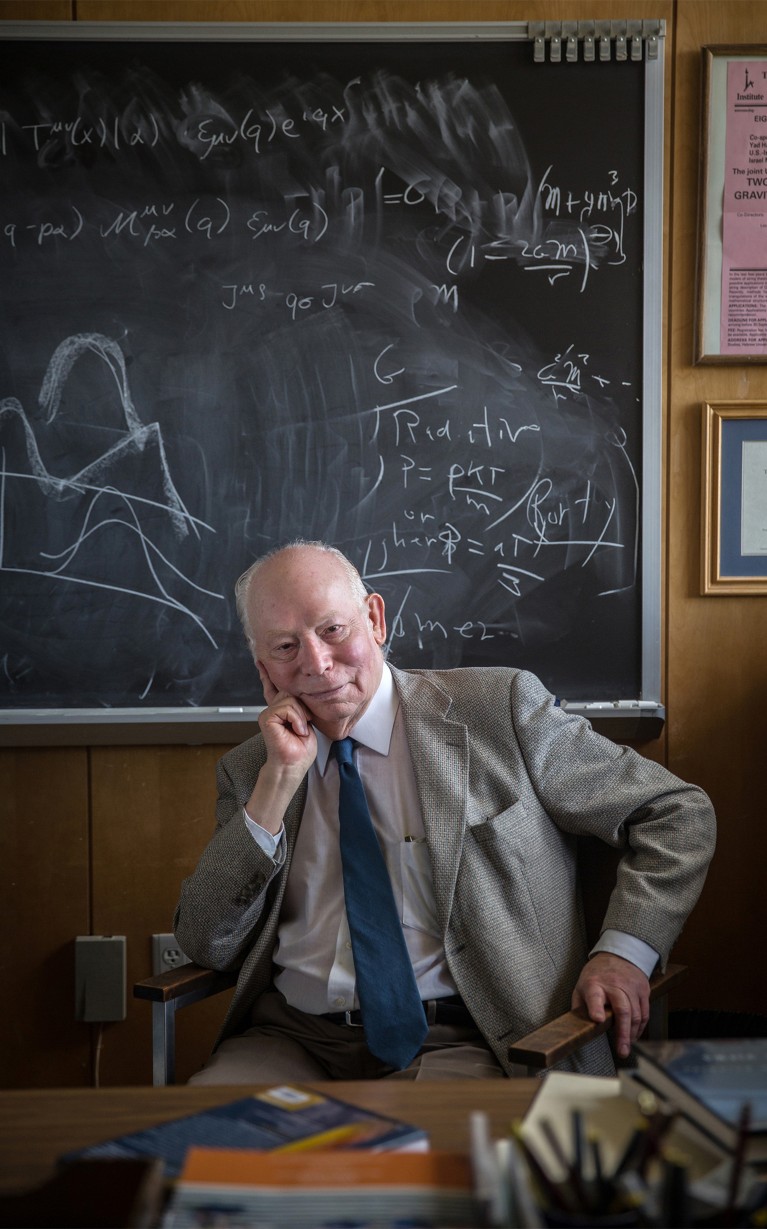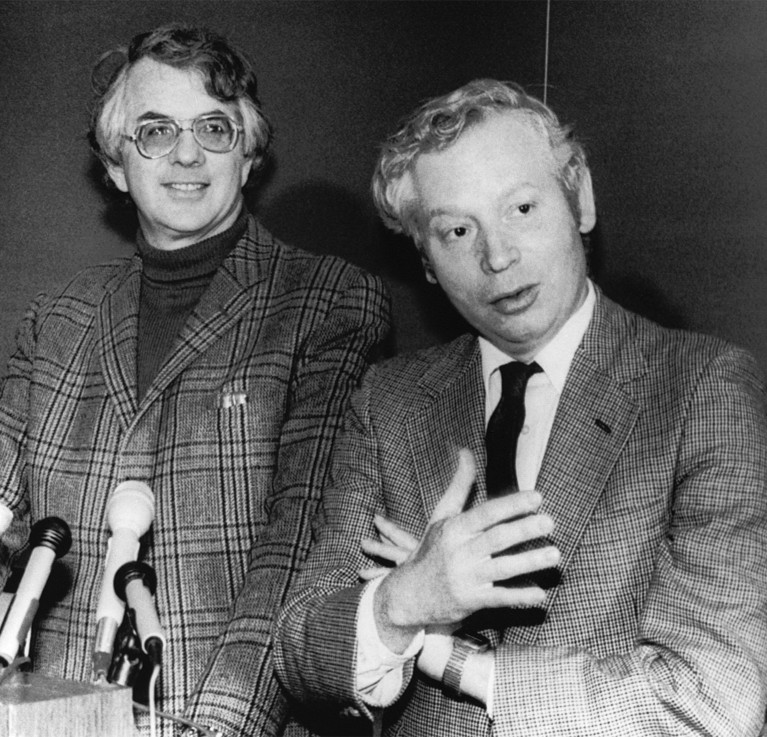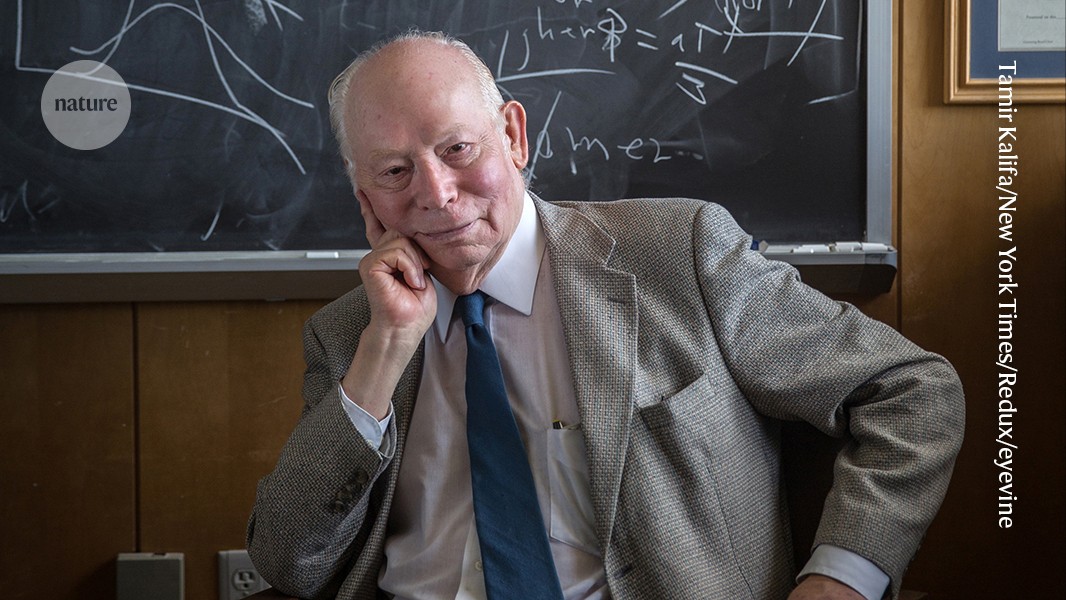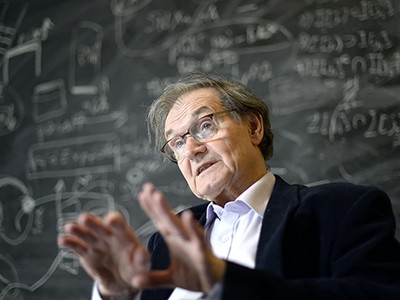
Physicist Steven Weinberg became known as a grandmaster of quantum field theory.Credit: Tamir Kalifa/The New York Times/Redux/eyevine
Steven Weinberg: A Life in Physics Steven Weinberg Cambridge Univ. Press (2024).
‘Big Steve,’ his students called him. Steven Weinberg was not physically imposing, but was an intellectually dominant and much-revered figure in the scientific community and on the public stage. One of the most distinguished theoretical physicists of the past 75 years, Weinberg dedicated his professional life to leading what he described as the ‘grand enterprise’ of seeking the bedrock laws of nature that underpin the workings of the Universe. He looked the part, too — at physics conferences, he was often the only participant wearing a suit and tie.
When he died in 2021, he was only a few months away from completing his memoir, a roughly chronological account of his life up to the 1990s, with his perspective on the development of fundamental physics over the past century. Cambridge University Press has now published the book, which is written for a wide audience, featuring neither unexplained jargon nor even a single equation.
How quantum mechanics emerged in a few revolutionary months 100 years ago
His account of his formative years as a boy from the Bronx, a borough of New York City, is a fascinating glimpse into the influences that shaped him. Born in 1933, during the Great Depression, he was the only child of Frederick and Eva Weinberg, both immigrants from Europe. Although his parents were of modest means, he never felt deprived — they gave him a stable, loving home and cultivated his appetite for learning. He writes: “Whatever native intelligence and intellectual curiosity I may have, I owe to my parents, in particular, my father.”
Although not a prodigy, Weinberg was bright and inquisitive, a voracious reader and immersed in the popular culture of the era, especially on radio and television. He flourished at the highly regarded Bronx High School for Science, counting himself lucky to have been educated in a place where “it was cool to be smart”. Many of his fellow students were bright and strongly motivated, including his best friends Sheldon Glashow and Gerald Feinberg, both destined to be leading physicists. Weinberg and Glashow went on to study together as undergraduates at Cornell University in Ithaca, New York, where Weinberg met the love of his life and soulmate Louise Goldwasser, whom he married in 1954.
Theoretical advances
Weinberg later became best known among physicists as a grandmaster of quantum field theory. This was based on the classical concept of a field, modified to incorporate both quantum mechanics and the special theory of relativity. As a PhD student at Princeton University in New Jersey in the 1950s, he cut his teeth as a field theorist, learning the then recently developed theory of quantum electrodynamics, which described electrons and their interactions with electromagnetic fields.
The contentious genius who made black holes real
Weinberg was soon regarded as one of the most able young theorists, and he was well aware of his talent. He admits that he was “brash and self-confident” — qualities that irritated some of his colleagues, not least theorists Murray Gell-Mann and Richard Feynman, themselves pre-eminent theorists of the era. Neither of them were friendly to Weinberg, partly, he thought, because he was “too often thinking outside the box, and it was their box”.
He made his most famous breakthrough soon after he moved to the Massachusetts Institute of Technology in Cambridge, in 1967. He hit on the idea that electromagnetic interactions and the apparently quite different weak interactions responsible for radioactivity could be described inside the framework of a single, ‘electroweak’ model.
Weinberg (and, independently, theorist Abdus Salam) surmised that, at extremely high energies, these two superficially different types of interaction should be intertwined according to a theory introduced by Chen-Ning Yang and Robert Mills in 1953, whose equations featured what was known as gauge symmetry. Weinberg and Salam suggested that this symmetry was hidden by a mechanism — proposed by UK theorist Peter Higgs and independently by François Englert with Robert Brout — endowing mass to most fundamental particles, although not to the photon. The mechanism implied the existence of a spinless particle that experimenters had not observed.

Weinberg and his schoolmate Sheldon Glashow won shares in the 1979 physics Nobel.Credit: Bettmann/Getty
At first, this idea attracted little attention, mainly because no one could demonstrate that the theory made sensible, finite predictions of measurable quantities — it might not be renormalizable. After the Dutch theorist Gerard ‘t Hooft proved that the Weinberg–Salam model was indeed renormalizable, interest in the theory took off and Weinberg’s paper became one of the most cited in the history of physics.
After experimental support for the Weinberg–Salam model rolled in, it was no surprise that they were awarded the 1979 Nobel Prize in Physics, sharing it with Weinberg’s secondary-school friend Glashow, who had pioneered the use of gauge theories in particle physics.
By that time, theorists had successfully devised a gauge theory (quantum chromodynamics) to describe the strong interactions between quarks, constituents of particles such as the proton and neutron. The result was the standard model of particle physics, a unified account of the strong, weak and electromagnetic interactions that together describe the behaviour of all atoms. After the experimental discovery of the Higgs boson in 2012, there was no doubt that the model was one of the supreme communal achievements in the history of science, with Weinberg being one of its key architects.
Non-specialists might sometimes be overwhelmed by the details of Weinberg’s account of the development of the standard model. But he takes care to leaven his narrative with engaging accounts of his meetings with other famous physicists, including Robert Oppenheimer and quantum pioneers Niels Bohr and Wolfgang Pauli. Most fascinating are his experiences as a member of the JASON group of top-drawer scientists that gives independent, secret advice to the US government.




